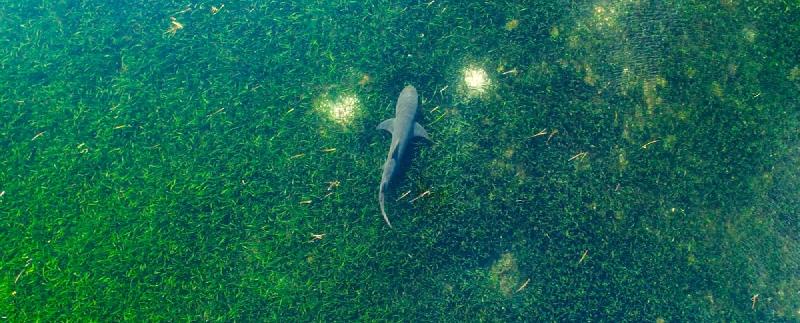What is seagrass?
Seagrasses are plants related to water plantains and land-grasses. Unlike seaweed, which are types of algae, seagrasses have many of the same parts as land plants. Roots, leaves, seeds etc. They grow in clear, shallow waters around the world and can form large meadows. These meadows absorb wave energy, calming waters and allowing sediment to settle to the bottom. In this way they are ecosystem engineers, creating the calm, clear waters they need in order to photosynthesize and thrive.
Seagrass and seagrass beds - Smithsonian
Why are seagrass meadows important?
As mentioned above, the fronds of seagrasses can absorb wave energy. This takes away energy from waves and slows down coastal erosion.The dense fronds are also an excellent food source for many marine herbivores, including dugongs and sea turtles. They also provide shelter for many young fish and other animal species.
Seagrasses absorb carbon dioxide and use it in photosynthesis to produce sugars. Then, because the roots of seagrasses can grow deep underground, this absorbed carbon is locked into the sediment. Because of this, these habitats are significant carbon sinks.
- The importance of seagrass meadows - Ocean mimic
What are threats to seagrass meadows?
Water pollution like runoff from agriculture can harm these meadows by causing algae blooms. If too much algae covers the fronds of seagrasses, they can lo longer photosynthesize and will die.
Some fishing and mooring practices can also harm meadows by dragging along the bottom and pulling up grasses.
- Current threats to coastal seagrass ecosystems - University of Miami; Shark Research
- Threats to seagrass ecosystems graphic
Monitoring seagrass
Project seagrass makes use of drone and satellite imagery to identify seagrass habitats, but individuals can contribute significantly to this effort by submitting their own sightings of seagrasses to Seagrass Spotter. This helps to verify the results from satellite imagery, and identifies the species which might be present in an area.
